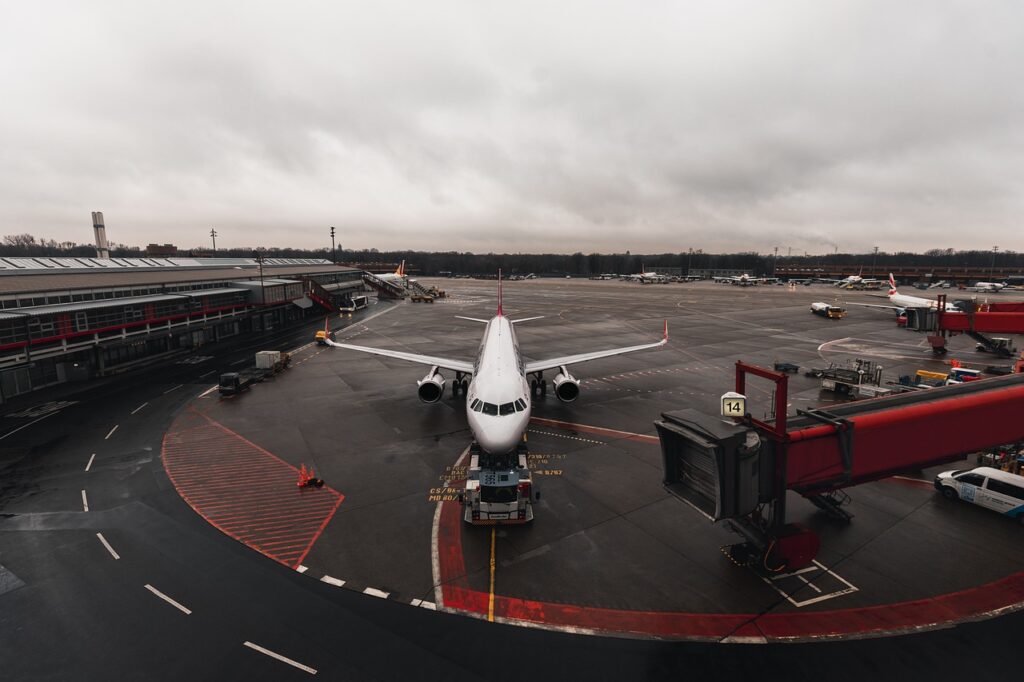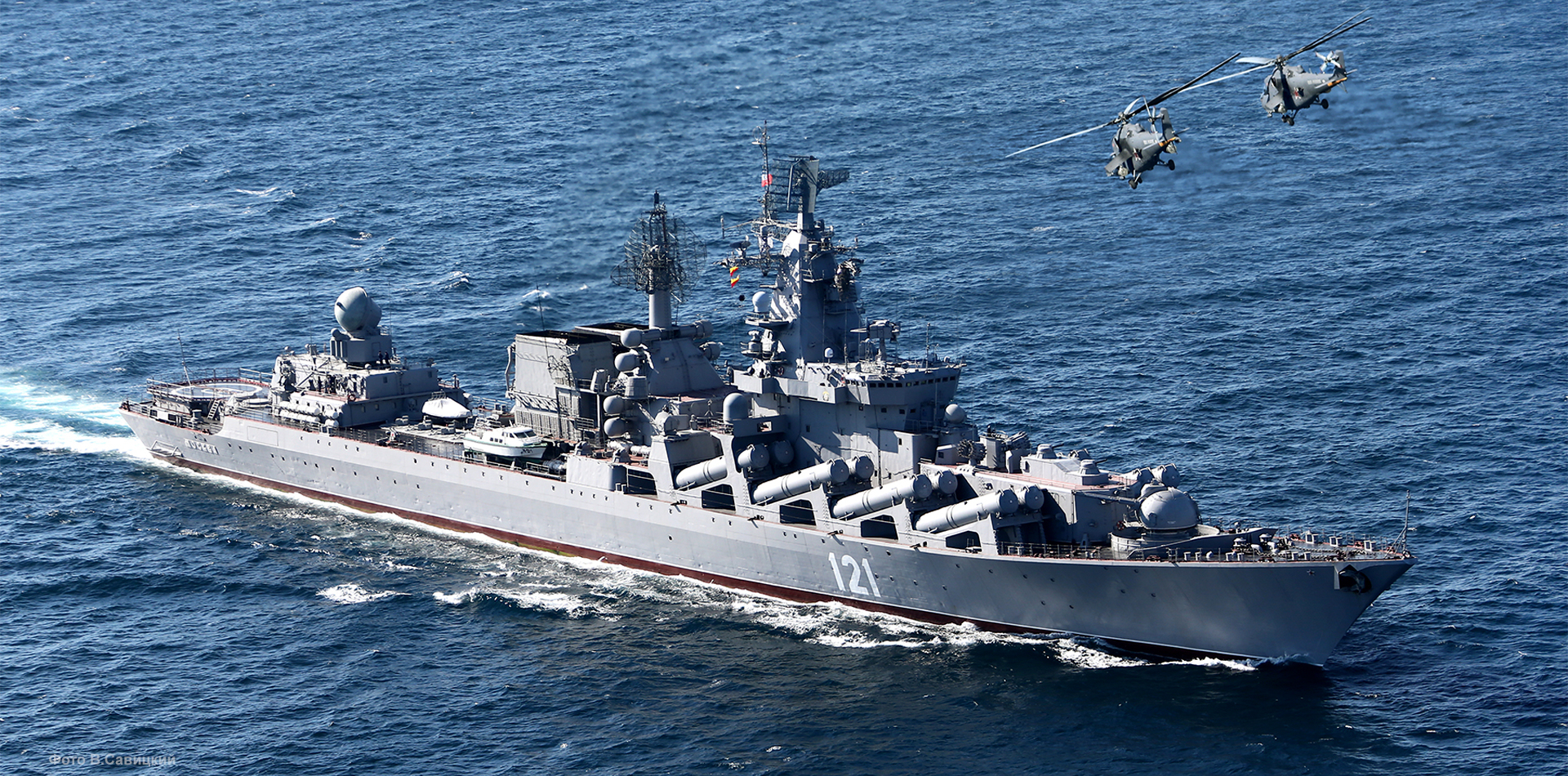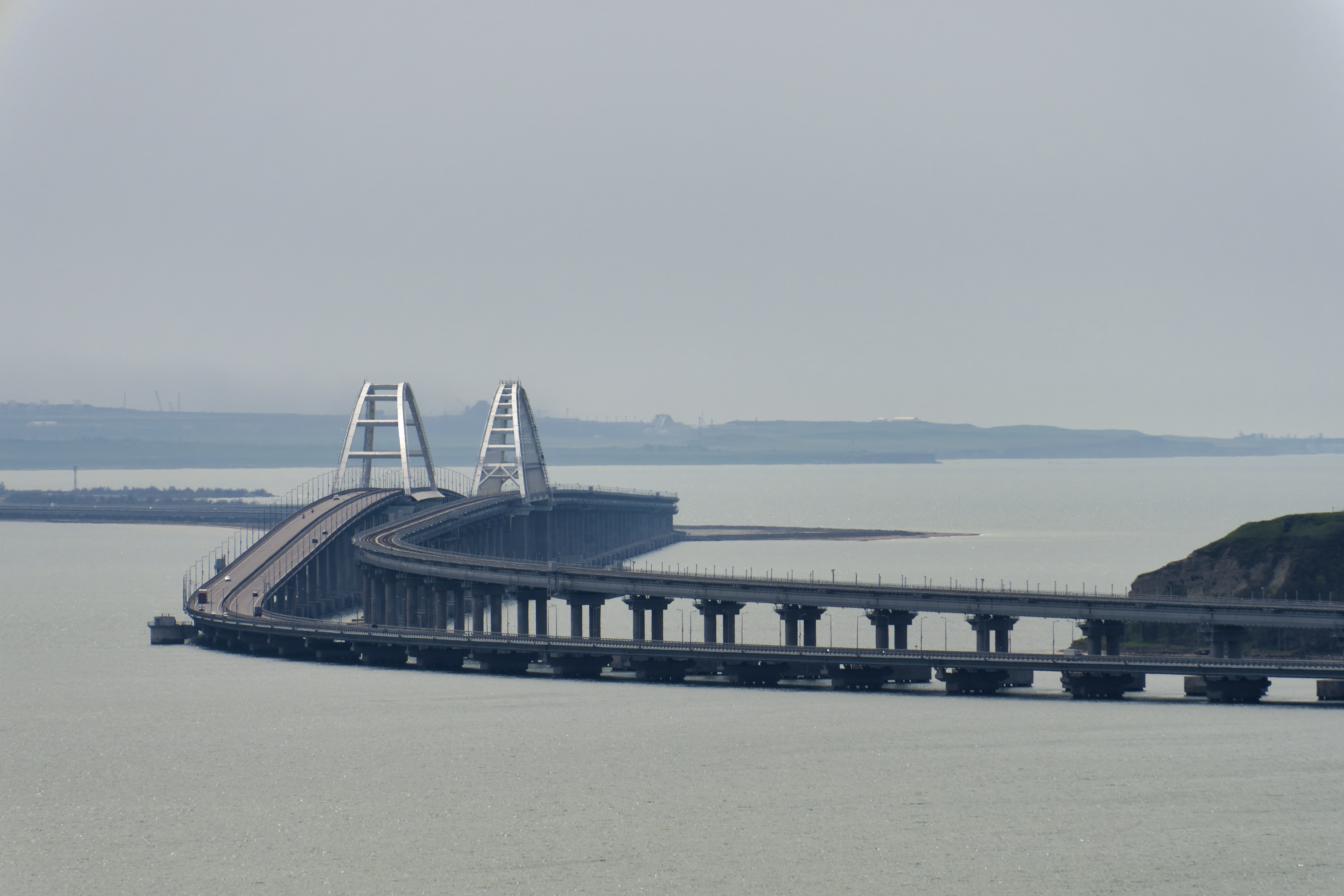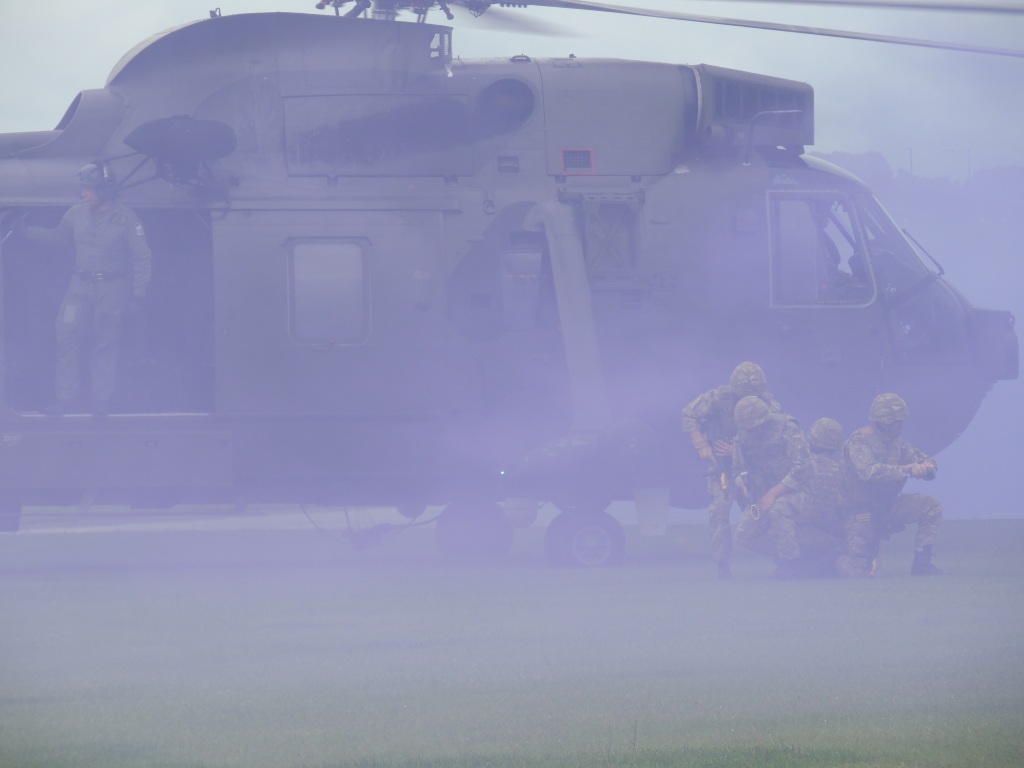
In the fourth year of Russia’s so-called special military operation, a new reality has taken hold on the battlefield. It is now Kyiv that is consistently executing special operations against Moscow, week after week. Facing a larger adversary without overwhelming force or endless stockpiles, Ukraine has pivoted towards asymmetrical warfare, relying on ingenuity, adaptability, and a keen ability to seize tactical opportunities as they arise.
This strategic necessity has driven Ukraine to develop and deploy a range of innovative tactics and technologies, pushing the boundaries of conventional military doctrine. While the need for traditional air defense systems like Patriot and IRIS-T remains critical for protecting cities, the focus has increasingly shifted towards disrupting Russia’s ability to wage war at its source. This includes targeting supply lines, command centers, and high-value military assets deep behind enemy lines.
These operations, often carried out with a combination of domestically developed capabilities and clever strategy, are not merely symbolic strikes. They are designed to have tangible effects on Russia’s logistics, coordination, and overall capacity for offensive action, forcing Moscow to adapt and divert resources. They represent a series of calculated moves that collectively contribute to Ukraine’s defense and are reshaping the understanding of what is possible for a military facing a larger, conventionally stronger foe. Here, we examine some of the boldest and most impactful of these operations to date.

1. **Snake Island: Ukraine’s first punch**:
On day one of the full-scale invasion, Russia moved swiftly to secure Snake Island, a small, seemingly insignificant rock located 120 kilometers off the coast of Odesa. Despite its size, the island holds considerable strategic importance in naval warfare due to its elevation, providing crucial line-of-sight control over movements in the northwest Black Sea. Russia recognized this, aiming to establish a foothold there quickly. A small contingent of Ukrainian border guards defended the post, isolated and outgunned. It was during this initial assault that one of the guards, Roman Hrybov, delivered the now-famous defiant radio response: “Russian warship, go away yourself.” The defenders were subsequently captured but later exchanged in a prisoner-of-war swap.
Following its capture, Russia began fortifying Snake Island, accumulating missiles, radar systems, artillery, and establishing supply drops, transforming the rock into a miniature fortress. However, Ukraine was determined to reclaim this strategic point. They initiated a series of counterattacks, utilizing Neptune missiles and drone strikes to soften Russian positions. This was followed by daring special forces operations involving SBU, HUR, and Navy commandos who flew in at low altitudes to evade radar, landed in a minefield, and engaged the Russian troops directly.
The fighting was intense, and Russian forces reportedly attempted to detonate the island, including their own troops and mines, but failed. Facing persistent Ukrainian pressure and suffering losses, Russia ultimately withdrew from Snake Island on June 30, 2022. This victory was not just symbolic; regaining control of the island allowed Ukraine to monitor and influence maritime activity in the crucial northwest Black Sea region, denying Russia a key observation and control point and demonstrating Ukraine’s capability to dislodge entrenched enemy forces from strategically important locations.

2. **Hostomel Airport and the defense of Kyiv**:
From the outset of the full-scale invasion, Russia’s strategy reportedly included a swift decapitation strike aimed at ending the war rapidly. A central component of this plan was the seizure of Hostomel Airport, positioned close to Kyiv. The intention was to land airborne troops, quickly secure the airfield, and use it as a major staging area for bringing in thousands more Russian forces and equipment. The goal was to have Russian troops inside Kyiv within hours, executing a lightning-fast operation designed to be overwhelming and decisive.
However, this ambitious plan was met with determined resistance from Ukrainian forces. Units from Ukraine’s National Guard and paratroopers from the 80th Brigade were rapidly deployed to counter the initial Russian landing force. They engaged the Russian troops head-on, preventing them from quickly consolidating control. A critical action taken by the Ukrainian defenders was the destruction of the airport’s runway. This rendered the airfield unusable for the large transport aircraft Russia intended to land, effectively halting the flow of reinforcements and equipment that were central to the rapid advance plan.
The airport quickly devolved into a fierce battlefield, with intense fighting raging for nearly two days. Helicopters attempting to ferry in Russian troops were shot down, and airborne units found themselves isolated and under heavy fire. What was envisioned as a quick seizure and a launchpad for a rapid push into Kyiv instead became a protracted and costly engagement for the Russian forces. This stubborn and effective defense significantly slowed the Russian advance towards the capital, grinding their planned lightning strike to a halt. The actions at Hostomel Airport fundamentally altered the trajectory of the war, transforming what many expected to be a three-day conflict into a long and arduous struggle that Ukraine, against initial expectations, proved capable of fighting and winning key battles within.

3. **The sinking of the Moskva**:
Ukraine entered the full-scale war without a traditional large navy, presenting a significant challenge in contesting Russia’s dominance in the Black Sea. However, this deficit spurred ingenuity and improvisation. In a notable operation in April 2022, Ukrainian forces achieved something unprecedented in modern naval warfare: they successfully targeted and sank a Russian missile cruiser operating in active combat. The vessel in question was the Moskva, the flagship of Russia’s Black Sea Fleet, a symbol of Russian naval power and a critical asset for coordinating operations in the southern theater.
The weapon employed in this audacious strike was a pair of domestically developed Neptune missiles. These missiles were reportedly retrofitted and launched from a hidden battery positioned near the Ukrainian coast. To facilitate the strike and bypass the Moskva’s formidable air defenses, Ukrainian forces devised a clever tactic: they sent Bayraktar drones ahead of the missiles. These drones served as decoys, drawing the attention and defensive fire of the Moskva’s onboard systems. While the Russian cruiser was engaged in swatting away the drones, the real threat emerged.
The Neptune missiles skimmed low over the water, evading detection until it was too late. Two hits were reportedly scored on the Moskva, causing significant damage and igniting fires. The pride of Russia’s Black Sea Fleet was severely crippled and eventually sank. The loss of the Moskva had strategic ramifications beyond the symbolic. As the flagship, it served as a central command and control vessel, equipped with radar and communication systems vital for coordinating operations and strikes, including those targeting Snake Island. Its sinking meant Russia lost its primary ‘eyes’ in the Black Sea, leading to a breakdown in coordination and leaving assets like Snake Island more exposed, subsequently contributing to Ukraine’s ability to recapture the island by the end of June.

4. **The Kherson counteroffensive**:
By late 2022, the city of Kherson, the only regional capital captured by Russia since the start of the full-scale invasion, had been under occupation for eight months. Moscow had taken steps to integrate the region, even declaring it part of Russia. The Russian forces were well-entrenched across the Dnipro River, fortified with heavy weaponry and artillery support. Given these circumstances, many military analysts at the time anticipated that liberating Kherson would be a prolonged and difficult endeavor, potentially taking years.
However, Ukraine launched a counteroffensive in the Kherson direction that defied these expectations. Beginning in early fall, Ukrainian forces applied steady pressure on Russian positions. They utilized a combination of artillery strikes and HIMARS rocket systems to target and isolate Russian units, focusing particularly on blowing up key supply routes necessary for sustaining the occupation forces. This systematic targeting gradually made Russian positions in the city untenable, leading to fractured command structures and exhausted troops.
Bit by bit, the cumulative effect of Ukraine’s operations forced the Russian military leadership to make a difficult decision. On November 11, 2022, Russian forces began a withdrawal from the city, retreating across the Dnipro River via the Kakhovka dam, which they subsequently blew up. The liberation of Kherson was a significant victory, not only reclaiming the only regional capital lost but also providing a major morale boost. Footage of ecstatic civilians welcoming Ukrainian soldiers back into the city flooded media channels. The context mentions that Ukrainian forces were reportedly in a position to potentially encircle and capture as many as 30,000 Russian troops during this retreat, but this opportunity was reportedly curtailed due to quiet pressure from Washington, based on unofficial accounts, aimed at avoiding potential Russian escalation by allowing the large force to withdraw.

5. **Kharkiv-Izyum counteroffensive**:
In September 2022, Ukraine executed a surprise counteroffensive in the Kharkiv region that dramatically shifted the momentum of the war. The operation caught Russian forces significantly off guard, largely due to a clever feint involving deceptive troop movements in other areas, which successfully drew Russian attention and reserves away from the actual target area. Russia reportedly fell for this tactical deception, leaving their positions in Kharkiv vulnerable to a rapid assault.
Capitalizing on the element of surprise and weakened Russian defenses, Ukrainian forces swept through the region with remarkable speed. Within days, they had liberated several key towns, including Balakliia, Kupiansk, and Izyum, the latter having served as a crucial logistics hub for Russian operations in eastern Ukraine. The scale of the territorial gains was substantial, with Ukraine reclaiming over 12,000 square kilometers of previously occupied land in a relatively short period.
The success of this counteroffensive was attributed to meticulous planning, effective utilization of intelligence gathering, and the skillful employment of the element of surprise. Ukrainian forces demonstrated proficiency in coordinating combined arms operations, using mechanized infantry, artillery, and special operations units in concert to exploit the weaknesses they had identified in the Russian defensive lines. This coordinated approach overwhelmed the Russian forces in the area and forced them into a chaotic and rapid retreat. The operation not only provided a significant boost to Ukrainian morale but also served as a powerful demonstration to international allies of the effectiveness of the military support they were providing and Ukraine’s capability to conduct complex, successful offensive operations, compelling Russia to re-evaluate its strategies and redeploy forces from other fronts to stabilize the situation.
As the conflict has evolved, so too have Ukraine’s tactics, demonstrating remarkable adaptability and ingenuity in the face of a larger adversary. The focus has increasingly shifted towards disrupting Russia’s ability to wage war at its source, utilizing a combination of domestically developed capabilities and clever strategies. These operations are designed to have tangible effects on Russia’s logistics, coordination, and overall capacity for offensive action, pushing the boundaries of conventional military doctrine.
Following the significant early victories and counteroffensives, Ukraine has continued to refine its approach, launching a series of bold operations that target key infrastructure, high-value military assets, and logistics deep behind enemy lines. This ongoing campaign represents a continuous effort to reshape the battlefield and impose costs on Russia that extend far beyond the front lines. It’s a testament to Ukraine’s determination and its ability to innovate under immense pressure.

6. **The Continuing Assaults on the Crimean Bridge**:
The Kerch Strait Bridge, a vital logistical link between Russia and occupied Crimea, has become a persistent target for Ukraine, symbolizing Moscow’s attempted annexation and serving as a critical supply artery for its forces in the south. The recent underwater attack on June 3rd, 2025, utilizing approximately 1,100 kilograms of explosives planted by SBU divers on the bridge’s supports, marked the third major strike and left the structure in critical condition. This operation underscored Ukraine’s evolving methods and determination to disrupt this key connection, preventing it from being safely used for travel.
This latest hit followed two previous significant attacks. The first, in October 2022, involved a truck bomb and reportedly coordinated naval drones, igniting a fuel train and damaging sections of the bridge. In July 2023, Ukraine employed a self-developed “Sea Baby” sea drone carrying 850 kilograms of explosives, primarily damaging the road sections. While Russia has repeatedly repaired the structure and significantly enhanced its defenses, including underwater barriers, advanced air defense, barges, fencing, divers, and even reportedly trained dolphins, Ukraine continues to find ways to challenge its security, adapting its tactics, such as evolving sea drones into carriers for FPV drones.
The importance of targeting the bridge has been a consistent theme for Ukrainian officials, viewing it as Vladimir Putin’s “crown jewel” and a symbol of his imperial ambitions. SBU head Vasyl Malyuk explicitly called it a “logistical artery” crucial for supplying Moscow’s army. Jon Sweet, a former US Army Intelligence Officer, described it as the “logistical lifeline” that sustains forces in Crimea, stating that if destroyed, Crimea would be “cut off – in essence, creating a siege warfare-like scenario.” While its battlefield impact has diminished somewhat as Russia relies more on rail lines through occupied eastern Ukraine, disabling it remains a powerful symbolic victory, signaling that Putin is losing control over his war.

7. **Perilous Helicopter Resupply Missions to Azovstal**:
In the spring of 2022, as Russian forces laid siege to Mariupol and cornered Ukrainian defenders within the massive Azovstal steel plant, a series of extraordinary and highly dangerous helicopter missions were undertaken. These operations were a desperate lifeline for the soldiers trapped inside, who had turned the sprawling industrial complex into their final stronghold. The missions aimed to breach the Russian blockade by air, delivering essential supplies like ammunition and medicine while simultaneously evacuating the most critically wounded personnel.
Executing these flights required incredible bravery and skill. Ukrainian pilots flew at extremely low altitudes, skimming just meters above the ground and water to evade sophisticated Russian radar and air defenses encircling the city. Despite these precautions, they faced intense anti-aircraft fire throughout the perilous journey. While many missions were successful, allowing the evacuation of 64 wounded soldiers and delivering 30 tons of vital cargo, the cost was steep, with at least three helicopters reportedly shot down by Russian forces.
These helicopter missions were more than just logistical operations; they were profound acts of defiance and solidarity that significantly boosted the morale of the besieged defenders. Knowing that their comrades were risking everything to reach them provided hope in the face of overwhelming odds. The pilots who volunteered for these flights did so fully aware of the high probability of not returning, embodying a spirit of sacrifice that resonated deeply both within the steel plant and across Ukraine. Although the defenders were eventually ordered to surrender, the memory of these daring flights remains a powerful testament to the lengths Ukraine went to support its fighters.

8. **The Successful Downing of a Russian A-50U Radar Aircraft**:
In a significant blow to Russia’s aerial command and control capabilities, Ukraine successfully targeted and destroyed a highly valuable A-50U airborne early warning and control aircraft in January 2024. This specialized aircraft serves as Russia’s flying radar station and command center, crucial for tracking Ukrainian targets, coordinating Russian air operations, and guiding strikes, including those involving glide bombs and cruise missiles. The upgraded A-50U variant boasts enhanced surveillance systems and is designed to operate safely far behind the front lines and multiple layers of air defenses.
The operation reportedly involved luring the aircraft into a cleverly laid trap. Ukrainian and British sources indicated that a hybrid system, potentially pairing an older Soviet-era S-200 missile system with a modern American Patriot, was used to achieve the difficult shot. The aircraft was operating over the Sea of Azov, an area previously considered relatively safe for such high-value Russian assets, when it was intercepted. The result was catastrophic, leading to the destruction of the A-50U and marking one of the most notable losses for the Russian Air Force since the start of the full-scale invasion, with a second such aircraft reportedly damaged soon after.
The destruction of the A-50U had immediate tactical and strategic implications. As the primary ‘eyes’ for Russian air operations, its loss impaired Russia’s ability to effectively coordinate its aerial activities. Notably, Ukrainian officials observed a measurable decrease in guided bomb attacks in the days following the incident, as Russia was forced to pull back its long-range aviation assets to protect them from similar threats. This event demonstrated Ukraine’s growing capability to target high-value assets deep within areas previously considered secure, forcing Russia to re-evaluate its operational procedures and exposing vulnerabilities in its supposedly robust air defense umbrella.

9. **Operation Spiderweb: Striking Russian Long-Range Bombers**:
On June 1, Ukraine unveiled a complex and ambitious operation known as ‘Operation Spiderweb,’ targeting some of Russia’s most potent offensive assets: its long-range bombers. This operation involved smuggling containers into Russia and launching remotely controlled drones from within Russian territory to strike the aircraft at their airbases. The coordinated assault resulted in significant damage, estimated at approximately $7 billion, directly impacting Moscow’s capacity to carry out aerial bombardments against Ukrainian cities.
The strategic rationale behind Operation Spiderweb aligns perfectly with Ukraine’s asymmetrical warfare approach, which prioritizes taking out the ‘archers’ when one lacks sufficient air defense to destroy all the ‘arrows.’ By directly attacking the source of Russia’s long-range missile and bomb strikes, Ukraine aimed to reduce the volume and intensity of attacks on its civilian population and infrastructure. This operation was a clear demonstration of Ukraine’s ability to project power deep into Russian territory through covert and innovative means, bypassing layered defenses and exploiting vulnerabilities.
Operation Spiderweb was part of a wider strategy to undermine Russia’s ability to wage war against Ukraine, particularly in the context of insufficient Western air defense support. Facing relentless Russian aerial attacks, Ukraine took decisive action to weaken Moscow’s offensive capabilities at their origin. The success of this operation, inflicting substantial material and operational costs on Russia, also served to create panic within Russian official circles and necessitated a re-evaluation of their air defense deployment strategies, potentially forcing them to redeploy assets across a wider, less fortified area.

10. **A Campaign Targeting Russian Airbases and Deep Territory**:
Beyond specific named operations, Ukraine has developed a sustained campaign of drone strikes targeting military infrastructure and symbolic sites deep within Russia. A CNN analysis revealed the rapid expansion of Ukraine’s drone program over three years, escalating from attacks primarily near the border to striking key military targets and even reaching Moscow. By June alone, over 1,000 Ukrainian drones were reportedly launched into Russia, highlighting the scale of this evolving capability.
These long-range drone operations have successfully hit multiple Russian airbases, including Engels Air Base in December 2022 and Skov Air Base in late summer 2023, resulting in damaged aircraft visible in satellite imagery. The boldness of these missions is underscored by the May 2023 attack that reached the roof of the Kremlin, the heart of the Russian government, over 400 miles from Ukraine, effectively bringing the terror of war home to the Russian population. These strikes are not random; they are coordinated efforts by Ukraine’s national drone unit, leveraging domestically produced combat drones.
The technical sophistication required for such deep strikes is notable. As one manufacturer revealed, it is possible to remotely control these drones from Ukraine over vast distances (up to 2500 miles away) using satellite and mobile tower links. The success is measured by the damage inflicted, with Ukraine claiming billions of dollars worth of destruction on Russian weaponry. Launched from smuggled containers or flown out of trucks, these stealthy operations surprise local populations and pose a significant challenge to Russia’s traditional air dominance, forcing Moscow to grapple with threats emerging from unexpected locations deep within its own territory.

11. **The Evolution and Impact of Ukraine’s Novel Naval Drone Fleet**:
Recognizing its disadvantage without a traditional large navy, Ukraine has pioneered the development and deployment of a unique fleet of naval drones, fundamentally altering the balance of power in the Black Sea. This strategy represents a novel approach to naval warfare, relying on cost-effective, unmanned surface and subsurface vehicles to challenge a conventionally superior fleet. The “Sea Baby” drone used in the 2023 Kerch Bridge attack was an early example, but development has continued, leading to underwater drones like the six-meter-long, 1000km-range Marichka and the more compact Toloka TLK-150.
The strategic impact of this burgeoning drone fleet has been profound. Through persistent strikes and the credible threat they pose, Ukraine’s naval drone offensive has forced Russia’s Black Sea Fleet to retreat from its primary bases in occupied Crimea, seeking refuge in the port of Novorossiysk. This strategic withdrawal, described by HUR chief Kyrylo Budanov as effectively creating a “blockade,” has significantly reduced Russia’s ability to project naval power from Crimea and limited the effectiveness of its maritime operations in the northwestern Black Sea. It has also diminished the immediate necessity for Ukraine to conduct direct attacks on ports in occupied Crimea, as the primary naval threat has been pushed further east.
This transformation of the Black Sea theater demonstrates Ukraine’s remarkable ability to innovate and adapt its military strategy. By investing in asymmetrical capabilities like naval drones, Ukraine has been able to negate some of Russia’s traditional strengths and achieve significant operational outcomes, including influencing maritime activity and protecting its coastline and ports more effectively. The success of these novel systems has not only yielded tactical victories but has also served as a powerful proof of concept for the future of naval warfare, showcasing how smaller, agile, and technologically advanced forces can challenge larger, conventional navies.
Through these operations and strategic evolutions, Ukraine is not just fighting for its survival; it is actively rewriting the playbook of modern warfare. Facing resource limitations, it has leveraged ingenuity, adaptability, and the strategic targeting of enemy vulnerabilities to achieve effects disproportionate to its conventional capabilities. These daring actions, from striking deep inside Russia to creating a naval blockade with drones, highlight a military that is constantly learning, innovating, and pushing the boundaries of what is possible, proving that resilience and clever strategy can stand against overwhelming force.



